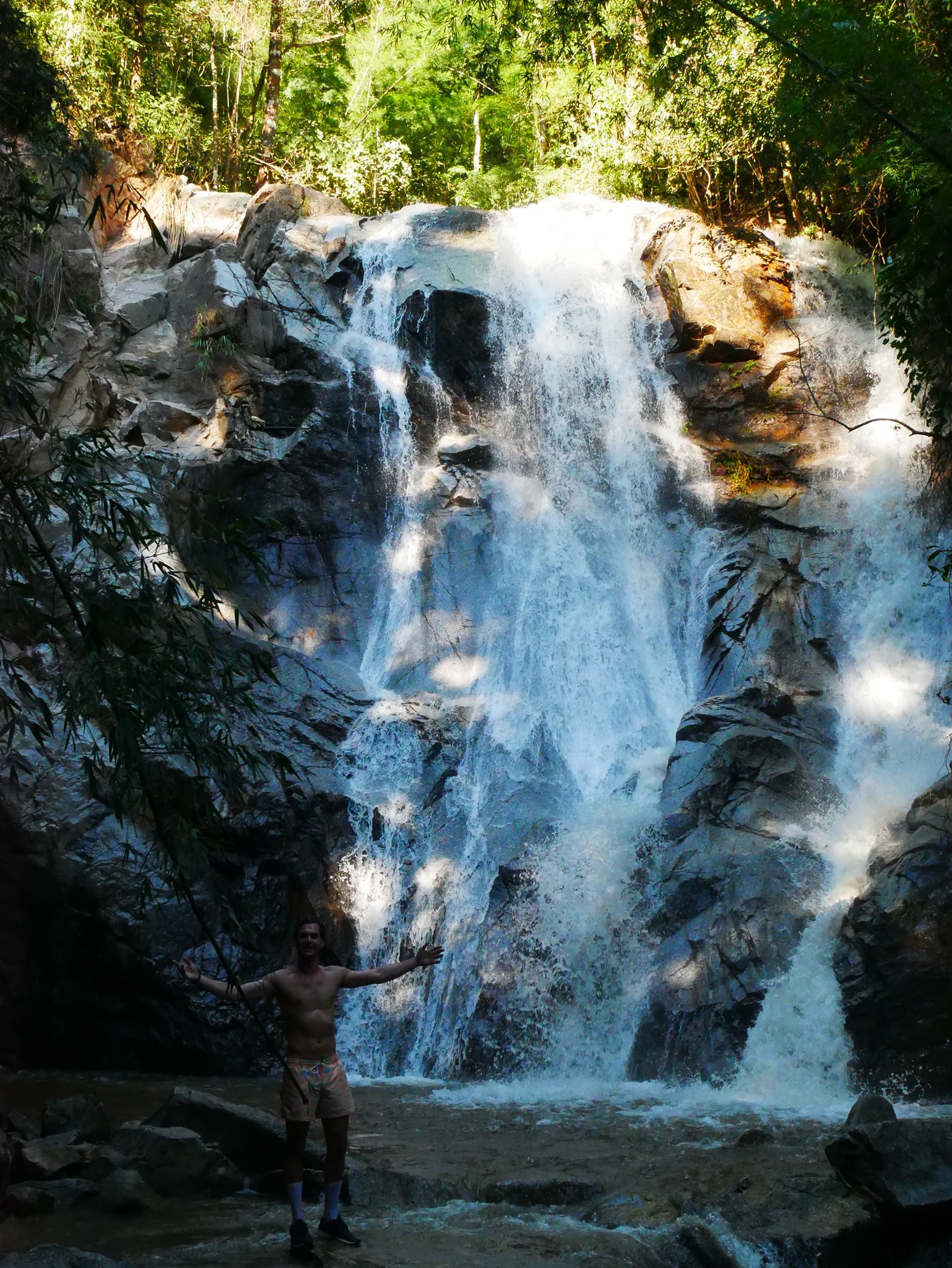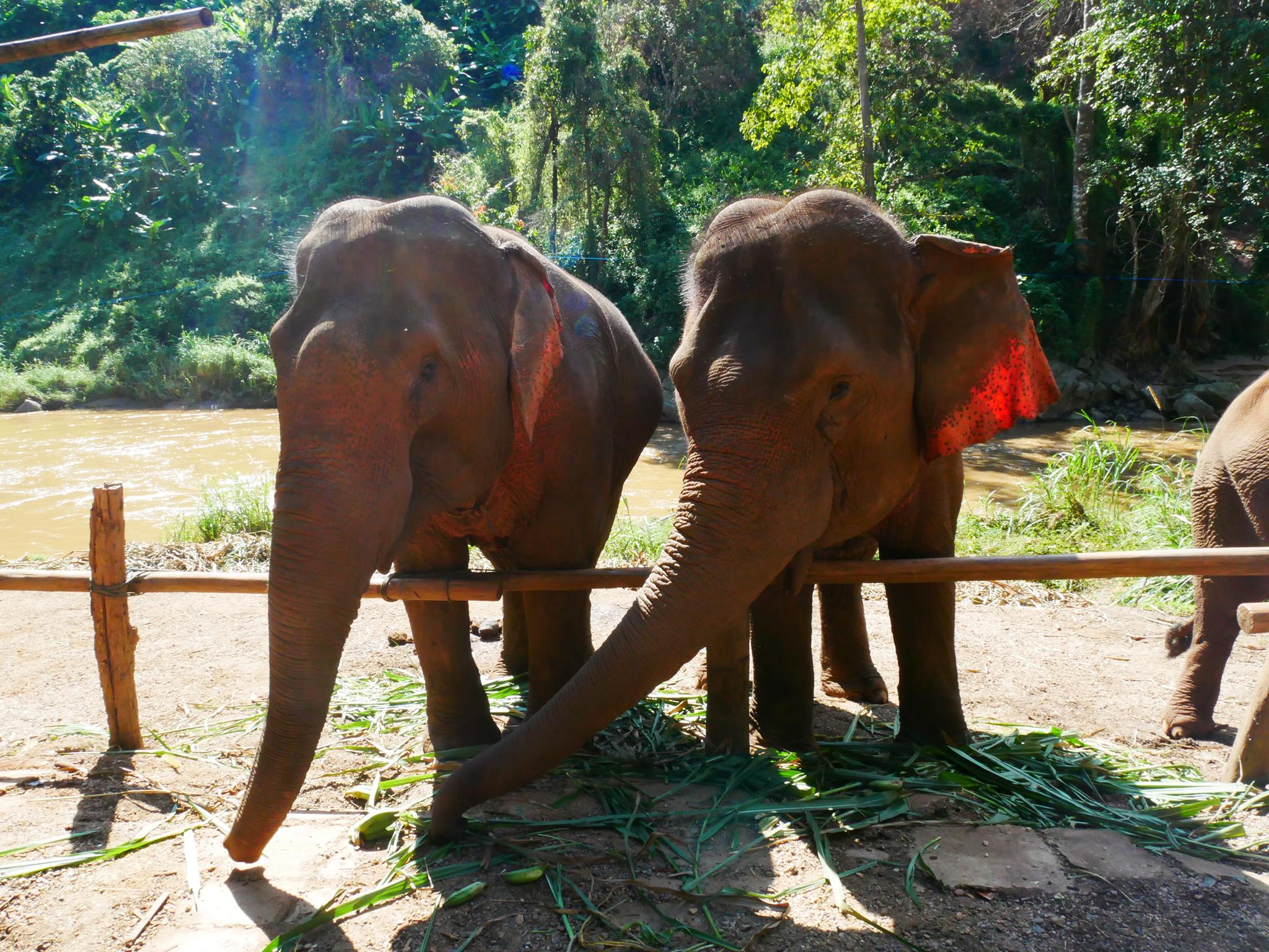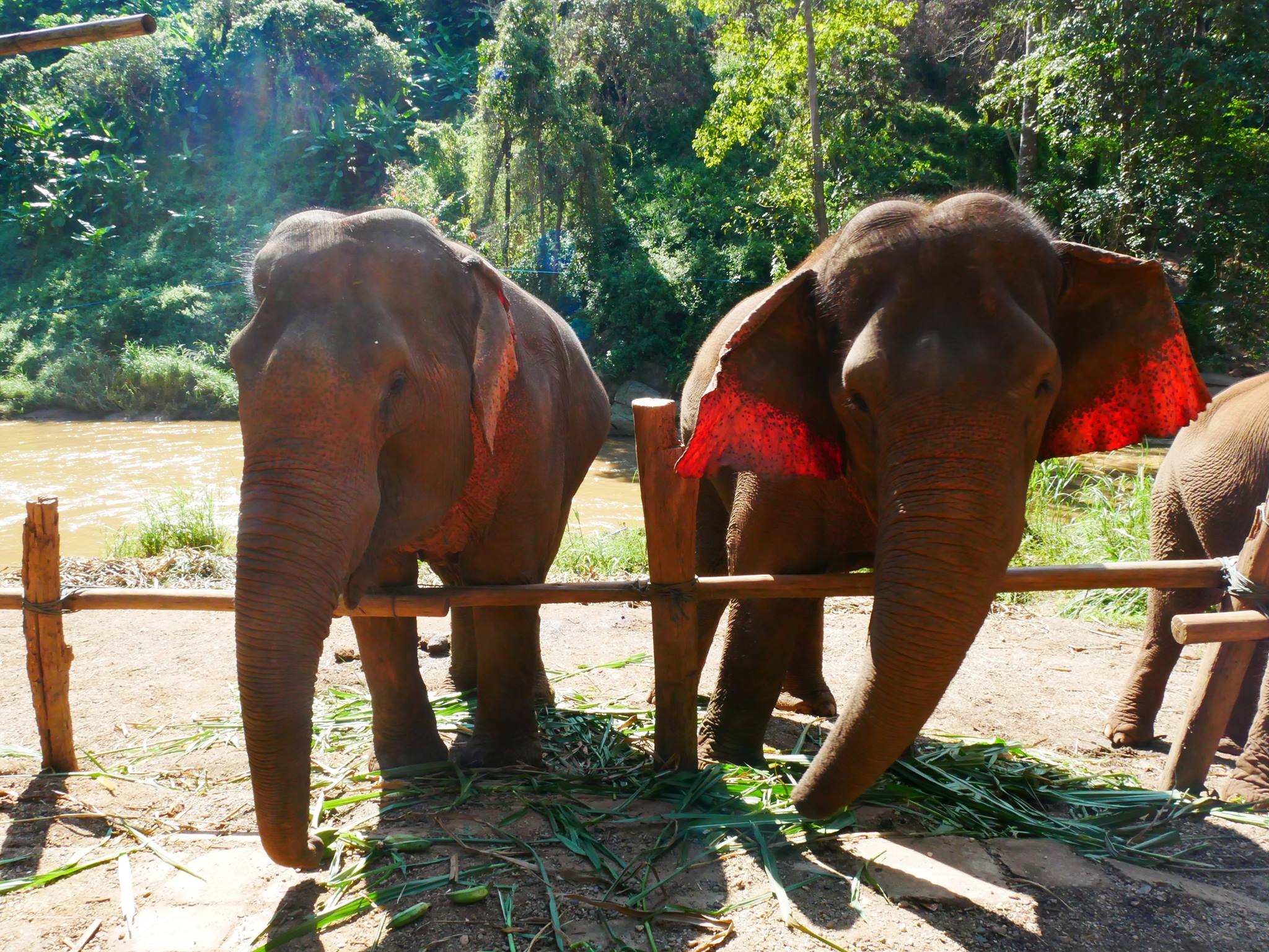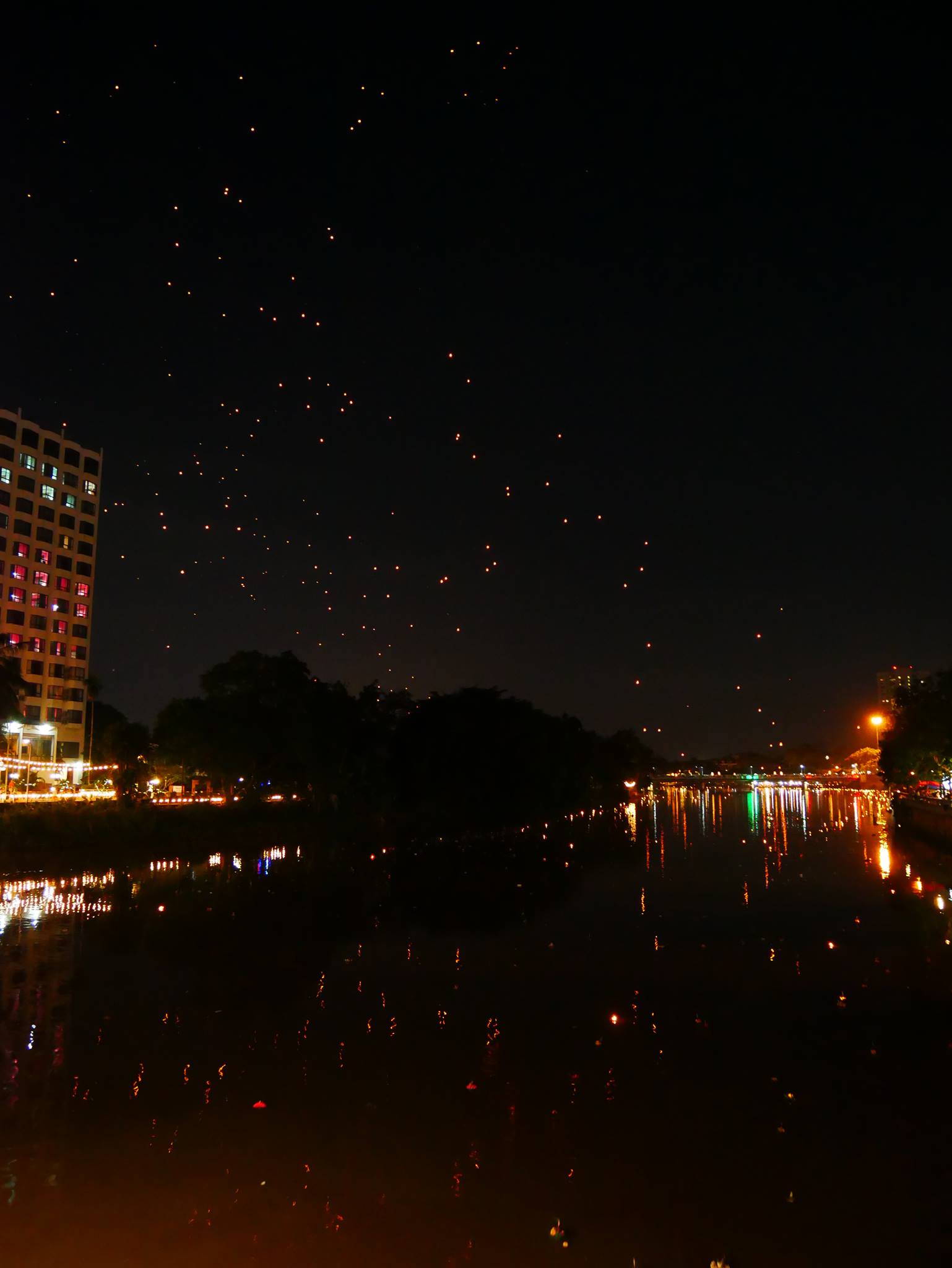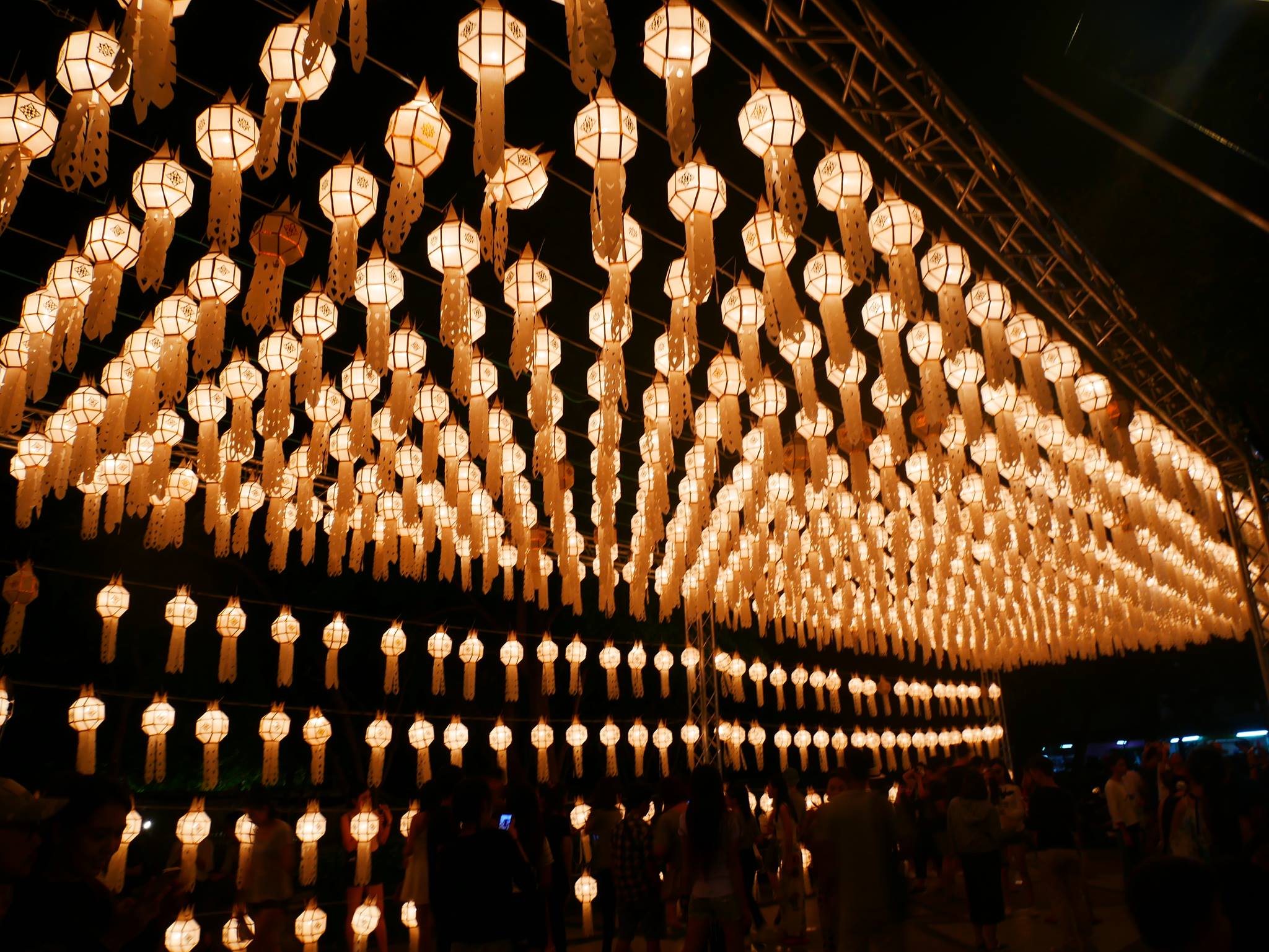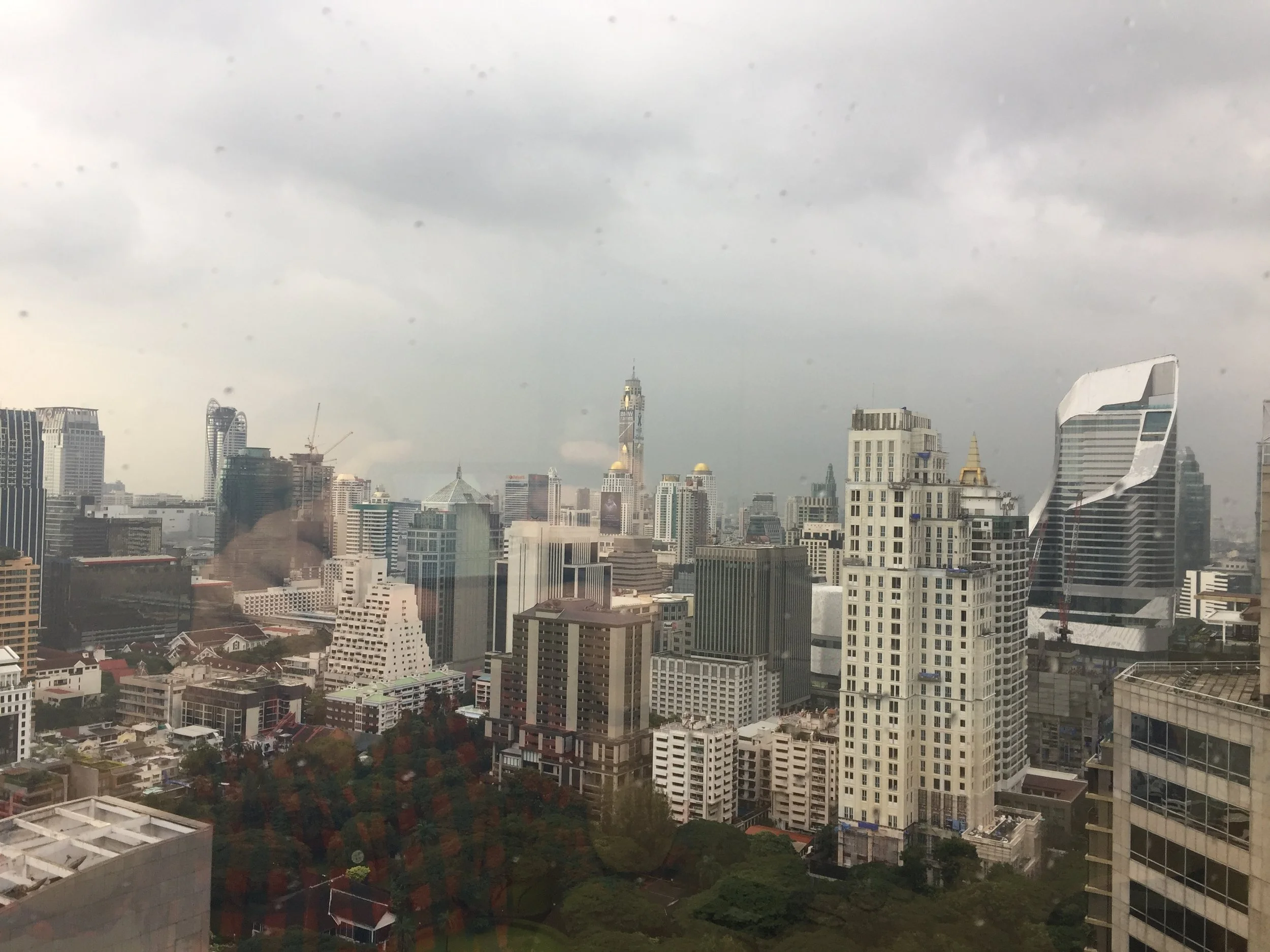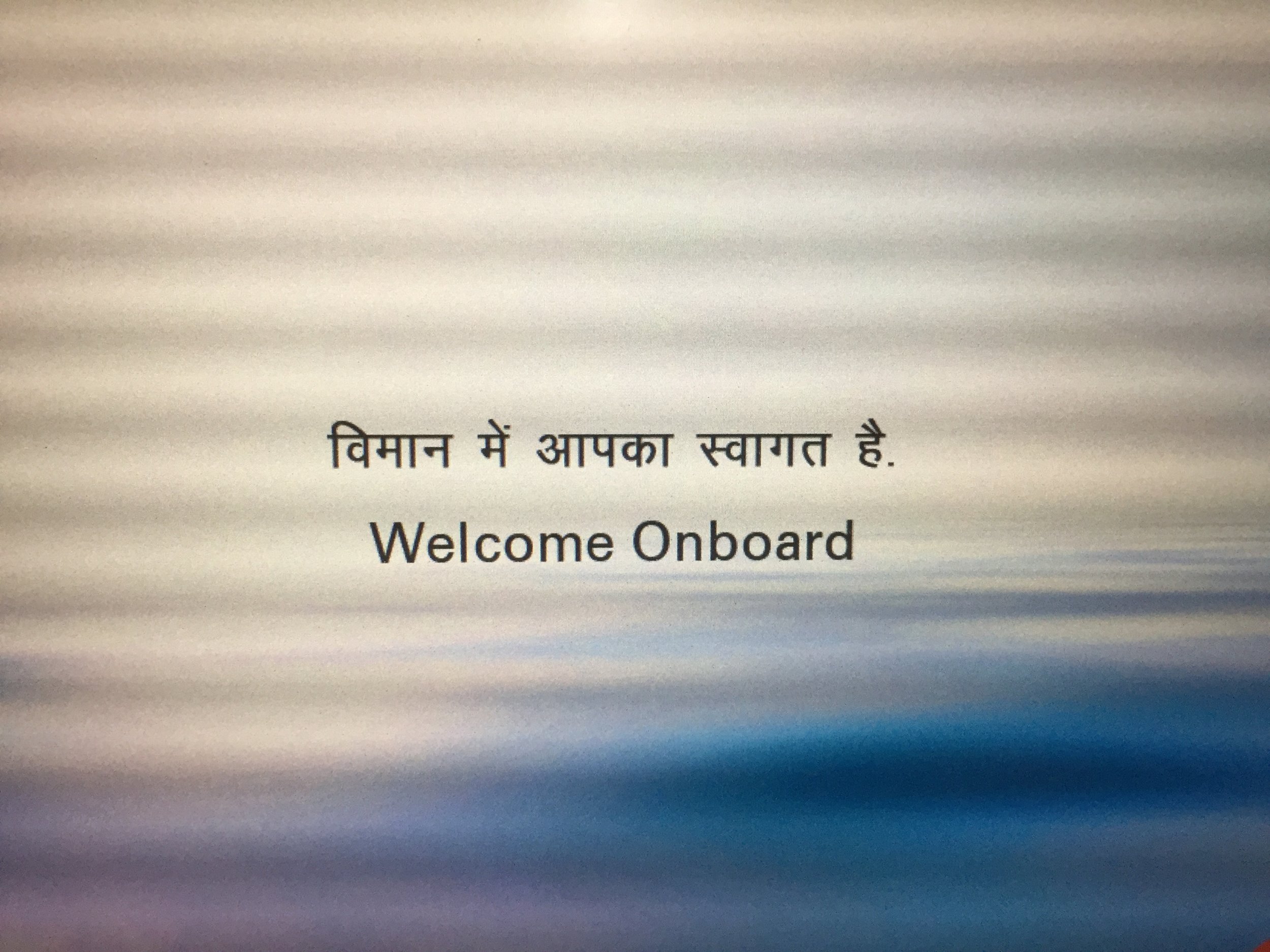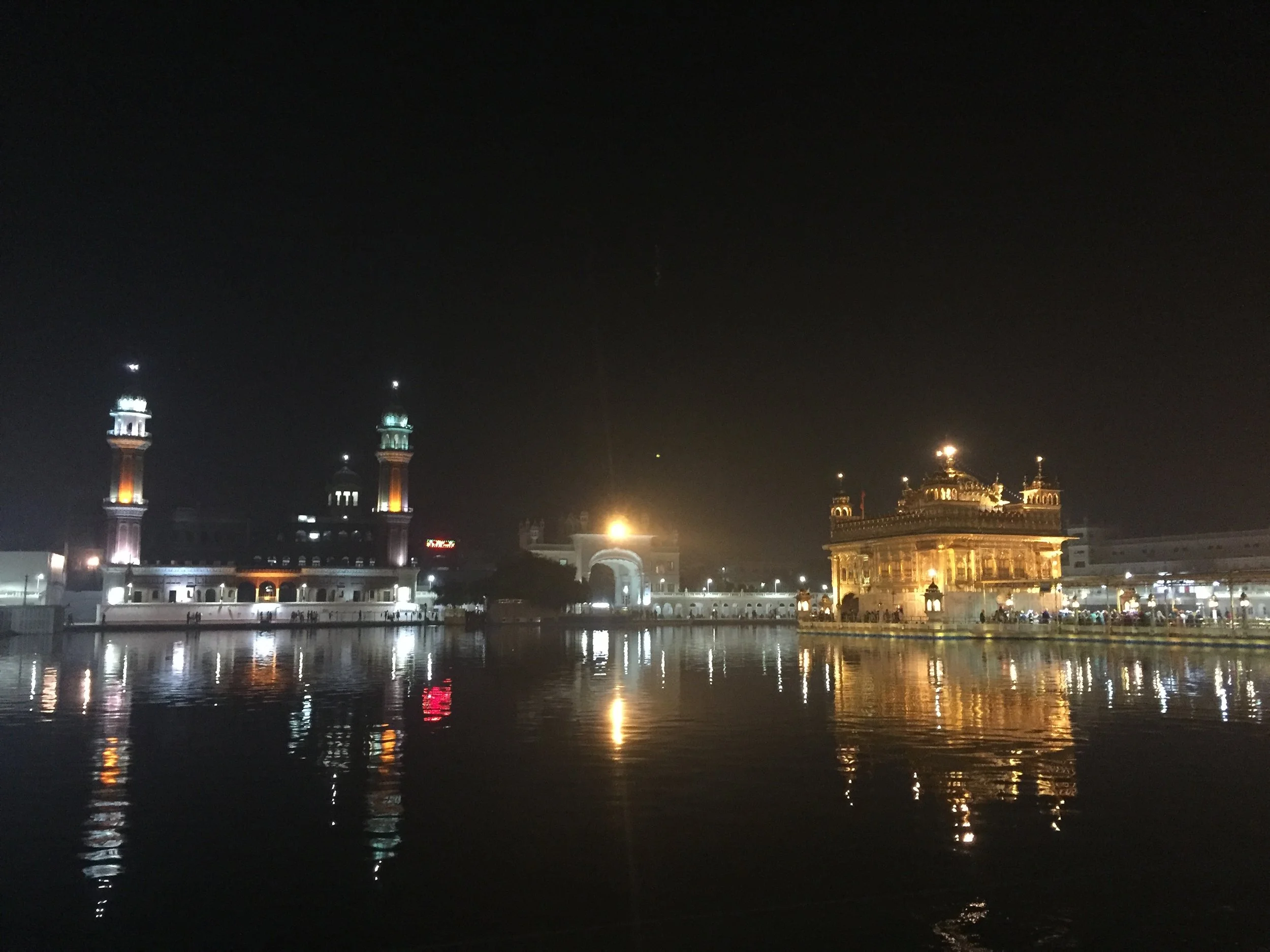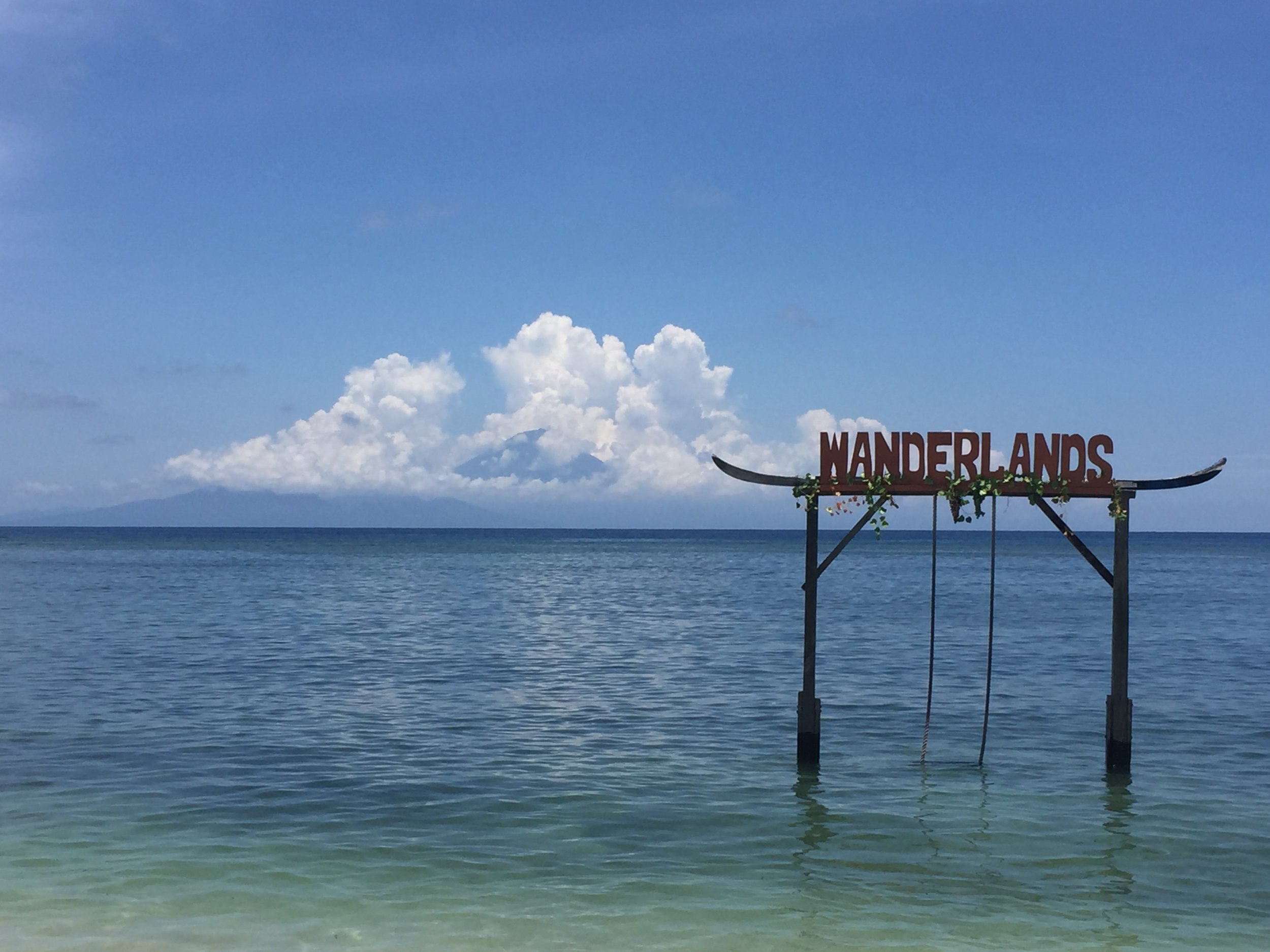Pai, Mai, Rai

There could not be more contrast between the scenic nature of northern Thailand and the frenetic urbanism of Bangkok.
We traveled overnight by bus from Bangkok to a quiet, remote town in the mountains called Chiang Rai, in northeast Thailand. Our host, Ni, was a local woman who had converted her tea plantation estate into a guest house. Chiang Rai does not play host to much of a lively tourist scene. The attractions can be condensed into one days' trip through the city to visit its modern White Temple, which stands out as a Thai Sagrada Familia, and into the surrounding mountains to meet Thailand's famous (and controversial) hill tribes.
The view from our porch in the tea plantation house.
Chian Rai's White Temple
In the morning of our stay, we woke up at sunrise with our host to walk the rice paddies on the plantations behind her house. The mountains there, which grow crops of bananas, tea, and rice, also play host to Singha's raw materials for their international beer brand. It was funny to walk the tea plantation and think that this was the very beginning of a global supply chain that ends with six packs in San Francisco's Chinatown.
Singha, which also provides a zoo, zipline, and open-air weekly music festival for Chiang Rai's locals, imports the workers on their paddies from neighboring Myanmar. The Burmese laborers are willing to work for a relatively lower wage than local Thais, which reminds me of another country I know that depends heavily on foreign labor for its menial and undesirable jobs.
Walking through the Singha tea and beer gardens in Chiang Rai at sunrise.
One thing that struck me all through Thailand was the prevalence of face-whitening creams, washes, and solutions in every drugstore. Lighter skin is associated in the culture with opportunity, status, and success. Darker skin is associated with outdoor, manual labor. This is visible in almost any commercial - where unless the subject of the ad is a muay thai fighter (still seen as a lower-class profession), the characters are all artificially lightened. Even Ni, our host, had her face whitened for all of her wedding photos. It provides an interesting contrast to the US, where for white people, being tanned is a sign of leisure and attractiveness. Yet maybe Thailand's color consciousness and fetishization of whiteness isn't really so different from back home...
With our host, Ni, and her husband.
With Ni at the unveiling of the Buddha (seen here photobombing.)
On our last afternoon in Chiang Rai, we joined our host for a ceremony that I doubt many outsiders ever see. Her local temple, still mostly under construction, was unveiling their new golden Buddha statue that provided the sanctuary's centerpiece. After making the trek up to the top of the hill with Ni and her neighbors with places of food and dessert, the attendees - who got a kick out of having two foreigners join them - put us to work serving food in the buffet line.
Chef curry with the pots boy.
Following our brief stay in Chiang Rai, we traveled to its more lively spotlight-stealing big brother to the south, Chiang Mai (a naming convention that never failed in making me confuse the two.)
Chiang Mai is every bit as busy as Chiang Rai is sleepy. But unlike the skyscrapers of modern Bangkok, Chiang Mai still retains its feel as a small town. The city is built around the walls of a centuries-old fortress, which serves as the city center. At night, the streets of the fort close down to traffic for a crowded night market that is guaranteed to give any introverts an anxiety attack.
Chiang Mai is also home to a large expatriate community of 'digital nomads' (a term that Dan and I both like less and less on the road), who arbitrage the low cost of living in easygoing northern Thailand while working online jobs. (It is the 2nd overall ranked city on Nomad List.) It's easy to see why Chiang Mai hosts so many transient foreigners. A one-bedroom apartment runs about $280 per month (1/10 of San Francisco's prices...) and there are many internet-enabled coworking spaces, one of which we visited, by the city's "coffee row," which is exactly as hipster as it sounds. Perhaps encouraged by the influx of remote tech workers, Uber recently made landfall in Chiang Mai to compete against the local tuk-tuk transportation industry, which shuttles passengers across town for the equivalent of $0.60.
How many gold Buddhas can one man take?
The 14th century Wat Chedi Luang Worawihan temple in downtown Chiang Mai.
At this point in our trip, we were getting used to the standard traveler conversation and questions one encounters on the road. As summarized by Lara, a young Brazilian woman sharing our hostel with us in south Chiang Mai, people only want to know: where you're from, where you're going, what you do (or did), and why you're traveling. It's easy to develop soundbites for these conversations, but the nature of the ephemeral friendships you make on the road is too transient to ever go far beyond these questions.
By luck, we happened to be in Chiang Mai for the annual lantern festival, a Buddhist tradition that lights up the city (as in the cover photo at the top of this page) and draws swarms of foreigners to party in the city. Even though nightlife in town is supposed to close down at midnight, enterprising locals keep some venues open til the early morning for tourists, while local police look the other way. We did not sleep much that leg of the trip.
For our last day in Chiang Mai, we went on a trek to a local elephant sanctuary, followed by a white water rafting trip and 2-hour hike to a waterfall in the jungle. There are two types of elephant treks offered in Chiang Mai: humane and inhumane. Tourists choose to visit the latter because guides let them ride the sad beasts they meet, which are mostly kept confined in chains and ushered on by hooks and crops as they lug tourists from one side of the jungle to the other.
We chose the other kind of trek.
For anyone who may not be aware, elephants are awesome. They top the list of cool animals who are generally happy just doing their own thing and would really appreciate it if you would stop trying to ride them and put them in circuses, ok?
This will be the album cover for our new band's greatest hits album.
This will not be.
At the sanctuary, we learned about the conditions the local elephants - 5 in all - had been rescued from. We gained their trust by feeding them bananas and sugarcane. If you have never seen an elephant eat a banana, they don't take much time to make conversation while they peel it. They eat that thing whole. We then leveraged that hard-earned intimate trust to ball up tamarind, which acts as a natural diarrhetic, inside of sticky rice, and tricked the elephants into eating the balls. This is supposedly a holistic medicinal solution for elephant disease, but comes across as more of a prank to induce some elephant IBS. To make it up to them, we gave the elephants full spa treatment, washing and exfoliating them in the river next to the sanctuary.
A scenic overlook in Pai replete with heart statues makes an interesting place for two hungover bros to take a scooter trip.
Our last stop in northern Thailand took us to Pai, a remote hippy village tucked away into small mountain valley, accessible only via a winding 4 hour van ride up mountain switchbacks that seem to have been designed intentionally to help tourists lose their lunches.
Pai is nothing if not idyllic. Everyone rents scooters to commute around and out of the town, which is surrounded by waterfalls, hot springs, mountain temples, and scenic canyons. The village itself plays home to a local craft market and quiet hippy bars with laid-back live music. A friend we met in Bangkok had just moved to Pai when we visited and got a two-bedroom apartment for the month for $150. If I ever disappear entirely, this is a safe bet for where to find me.
Finally, we made our way back down to Bangkok for what was supposed to be one night (but - surprise - turned into two because of our poor travel planning.) The Chinese-made sleeper train from Chiang Mai to Bangkok was clearly built with the kind of sparing, brusque efficiency that is employed with an unadorned post-communist clientele in mind.
In the always-chaotic Bangkok, I got a chance to meet with TechCrunch's southeast Asia bureau chief, who shared stories of the tech scene in this corner of the world. It sounds like the nascent startup environment is starting to pick up steam as entrepreneurs leverage cheap labor markets and the internet to grow localized companies, mostly in e-commerce. Still, the startup ecosystem is too new and the history too short for venture investors to have anything but minor confidence that their investments will be well-placed.
The outdoor cooking staff at Thip Samai, a faous restaurant in Bangkok's old town where we ran into the film crew for Viajes y Vidas, an Argentinian Anthony Bourdain-like travel show that we tried to get to hire us.
We also visited two last tourist destinations: Khaosan Road and Chatuchak market. A helpful guide to Khosan Road: if you ever have the chance to visit, don't. It is Bangkok's closest approximation to a Cancun or Vegas-style strip, complete with overagressive bar promoters and drunk 20-somethings looking to recreate their favorite scenes from The Hangover II.
The Chatuchak market is a small city unto itself. It is easy to get lost within the miles of stalls there - and we did. Quite literally anything is for sale there, from clothes to food to depressed and sedated animals (dogs, cats, turkeys, squirrels, chameleons...) confined to small cages. It is a notable departure from the expensive supermalls that dot the center of Bangkok, one of which closed down for the new king - the recently deceased king's son - to go shopping while we were in the mall.
Housekeeping does not mess around in Bangkok.
The terms and conditions of our train-booking service.
Leaving Bangkok to go to the skyrail, you could see people living in the squalor of small shanties alongside the railway tracks on the ground. While the poverty was no more striking than what you would see with American homelessness, the main difference was that in Bangkok these were ordinary - albeit poor - citizens making a life alongside the tracks; not just the homeless and dispossessed but regular people of few means creating impromptu kitchens and bedrooms from scrap.
With our time in Thailand coming to an end, we geared up for India and what would turn out to be one of the most surreal 72 hours of our trip.
Nik / 11.21.16
A depressed turkey hangs out in his cage plotting escape at the Chatuchak market.
Running into old coworkers on the road.
While I like to think I'm pretty great with an iPhone camera, the reality is that almost anyone we meet has better photos of our encounter than I do. As Dan joked, we may win an award for the two travel sites with the worst photography ever published. Below are some photos that our friend, Elodie, took of this leg of the trip.

































